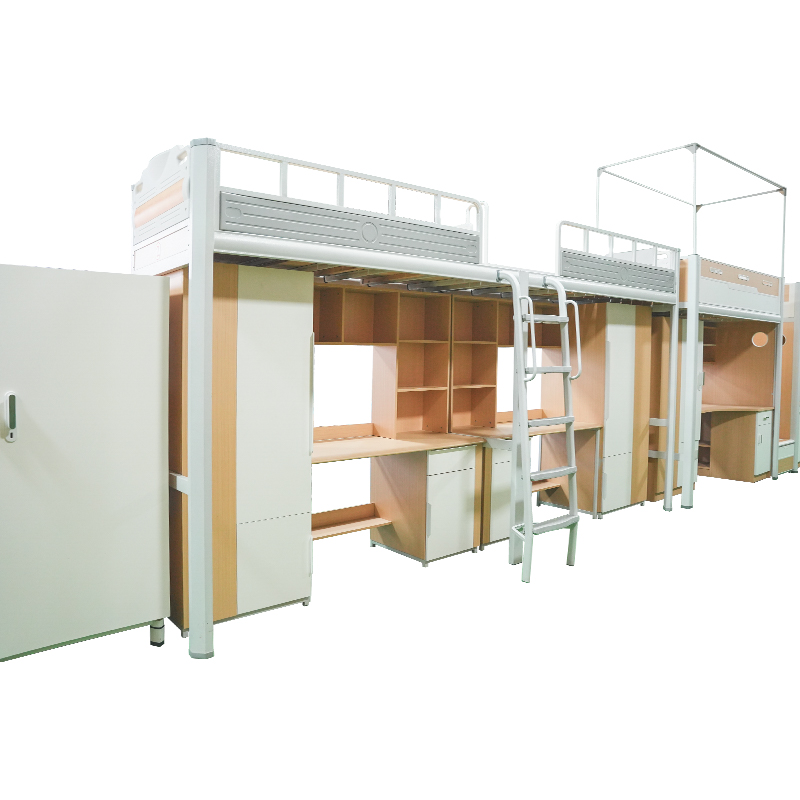
Dormitory beds are an essential part of shared living spaces, providing a place for students, workers, or residents to rest and recharge. The design and functionality of dormitory beds significantly impact the comfort and practicality of these spaces. With the increasing demand for efficient use of space in dormitories, selecting the right beds can improve both the overall living experience and the efficiency of the shared area. In this article, we explore how dormitory beds can enhance comfort and functionality in shared spaces.
One of the primary ways dormitory beds can improve comfort is through thoughtful design. Beds designed with ergonomic principles in mind can provide better support for the body, promoting restful sleep. Comfortable mattresses and well-designed bed frames that are easy to adjust can cater to different needs, whether it’s for lounging or sleeping. Additionally, many modern dormitory beds are equipped with features like memory foam mattresses or adjustable headrests, which further enhance comfort for residents who need to rest after a long day.
Space-saving is another major benefit of dormitory beds, especially in shared spaces where room is limited. Bunk beds, lofted beds, or trundle beds can help maximize floor space by allowing multiple individuals to use the same room without feeling cramped. By elevating the sleeping area, lofted beds create additional storage space underneath, making it possible to store personal belongings, study materials, or other essentials. This extra space is especially valuable in smaller dorm rooms, where organizing belongings and maintaining an uncluttered environment is key to comfort.
Functionality also plays a critical role in improving shared space environments. Some dormitory beds are equipped with built-in desks, shelves, or drawers, providing multi-functional solutions for residents. These integrated features allow individuals to study, work, or store their items without requiring additional furniture, helping to reduce clutter and make the most out of limited space. This is particularly important in dormitories, where students or residents often spend a lot of time in their rooms for both leisure and academic activities.
The durability of dormitory beds is another factor that contributes to their functionality. In shared spaces, beds are subject to frequent use, so they must be made of sturdy materials that can withstand wear and tear. Metal frames, reinforced joints, and high-quality slats are commonly used in dormitory bed designs to ensure longevity and stability. By investing in durable, well-constructed beds, dormitory managers can reduce the need for frequent repairs and replacements, which in turn saves time and money.
Another consideration when choosing dormitory beds is the ease of maintenance. Beds that are easy to clean and maintain ensure that the dormitory space remains hygienic and comfortable for all residents. For instance, beds with removable covers or washable components make it easier to maintain cleanliness and prevent the buildup of allergens or dirt. The materials used for the bed frame and mattress should be resistant to stains and easy to wipe down, allowing for a cleaner environment with minimal effort.
Finally, dormitory beds that promote privacy and personal space can enhance the overall comfort of shared living environments. Some designs offer features like curtains or partitions that allow residents to create their own private space within the room. These small adjustments can provide a sense of security and peace of mind, especially for individuals who may feel overwhelmed by the communal nature of dormitory life.
In conclusion, dormitory beds play a pivotal role in improving both comfort and functionality in shared spaces. Whether through space-saving designs, ergonomic features, built-in storage, durability, or ease of maintenance, the right bed can significantly enhance the living experience for residents. By carefully considering these factors, dormitory administrators can create a more comfortable, efficient, and enjoyable environment for everyone.


 English
English русский
русский Español
Español عربى
عربى
